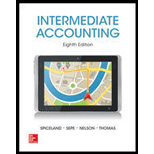
a. Current Assets: Current assets are the assets which can be easily converted into cash or consumed within one year. These assets are used in carrying out daily operations of a business.
b. Investments: Companies invest in stocks and bonds of other companies or governmental entity to deploy their excess fund, and/or for a specific business strategy.
c. Property, Plant and Equipment: Property, plant and equipment are the fixed tangible assets which are used for more than one year and are used for production purposes.
d. Intangible Assets: Intangible assets are fixed assets which do not have physical existence and generates a worth for the organization which is determined during acquisition or merger.
e. Other assets: Other assets are a separate group of assets listed in a balance sheet which are not suitable in the main asset categories.
f. Current liability: Current liability is an obligation that the companies need to pay from the remaining current assets or creation of other current liabilities within a fiscal year or the operating cycle whichever is higher.
g. Long-term liabilities: Long-term liabilities are obligations that the company needs to pay after at least one year or more. Long term liabilities are otherwise called as long-term debt.
h. Paid-in-capital: Paid in capital is the amount received from investors during the issue or sale of shares. It comprises of fund received from the sale of stock and not through the proceeds from ongoing operations.
i.
To Classify: The balance sheet items in the appropriate category.
Want to see the full answer?
Check out a sample textbook solution
Chapter 3 Solutions
Intermediate Accounting w/ Annual Report; Connect Access Card
- Please help me solve this general accounting question using the right accounting principles.arrow_forwardPlease provide the accurate answer to this general accounting problem using valid techniques.arrow_forwardPlease provide the accurate answer to this general accounting problem using appropriate methods.arrow_forward

 AccountingAccountingISBN:9781337272094Author:WARREN, Carl S., Reeve, James M., Duchac, Jonathan E.Publisher:Cengage Learning,
AccountingAccountingISBN:9781337272094Author:WARREN, Carl S., Reeve, James M., Duchac, Jonathan E.Publisher:Cengage Learning, Accounting Information SystemsAccountingISBN:9781337619202Author:Hall, James A.Publisher:Cengage Learning,
Accounting Information SystemsAccountingISBN:9781337619202Author:Hall, James A.Publisher:Cengage Learning, Horngren's Cost Accounting: A Managerial Emphasis...AccountingISBN:9780134475585Author:Srikant M. Datar, Madhav V. RajanPublisher:PEARSON
Horngren's Cost Accounting: A Managerial Emphasis...AccountingISBN:9780134475585Author:Srikant M. Datar, Madhav V. RajanPublisher:PEARSON Intermediate AccountingAccountingISBN:9781259722660Author:J. David Spiceland, Mark W. Nelson, Wayne M ThomasPublisher:McGraw-Hill Education
Intermediate AccountingAccountingISBN:9781259722660Author:J. David Spiceland, Mark W. Nelson, Wayne M ThomasPublisher:McGraw-Hill Education Financial and Managerial AccountingAccountingISBN:9781259726705Author:John J Wild, Ken W. Shaw, Barbara Chiappetta Fundamental Accounting PrinciplesPublisher:McGraw-Hill Education
Financial and Managerial AccountingAccountingISBN:9781259726705Author:John J Wild, Ken W. Shaw, Barbara Chiappetta Fundamental Accounting PrinciplesPublisher:McGraw-Hill Education





